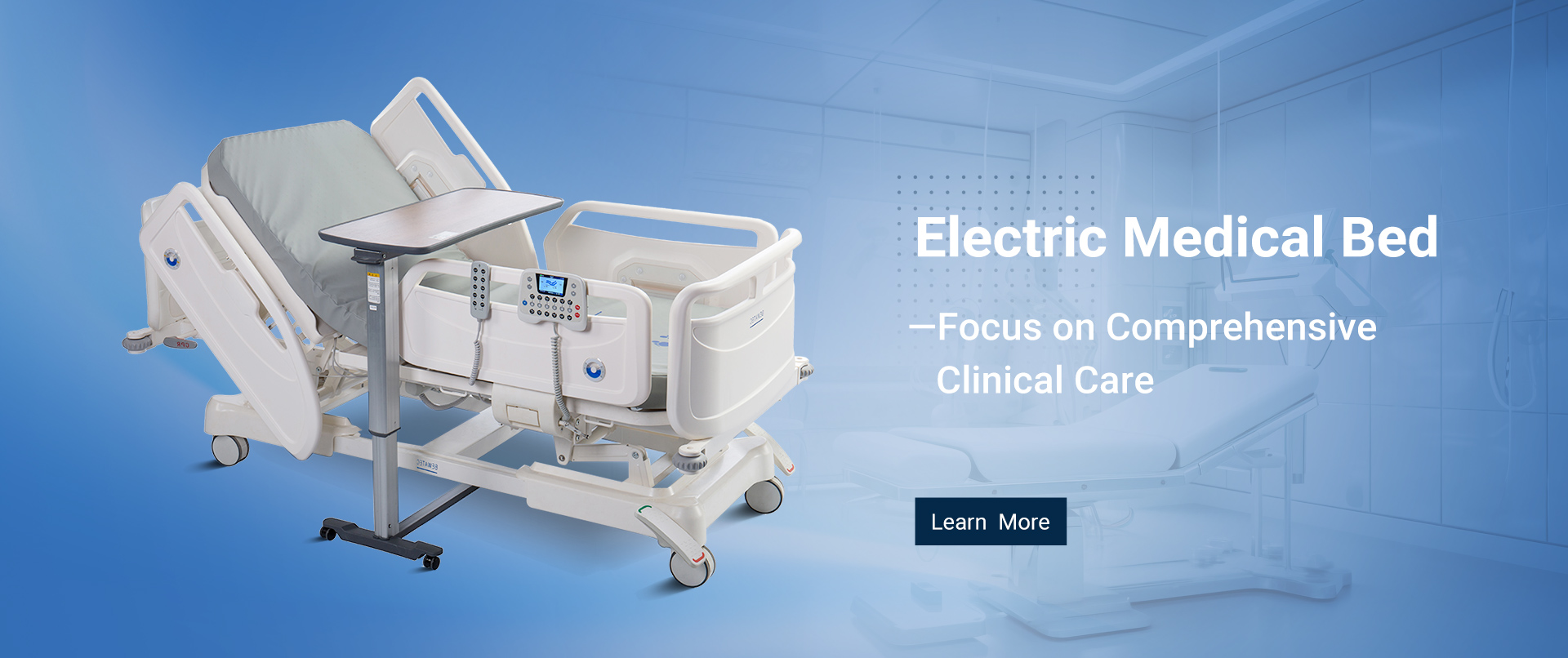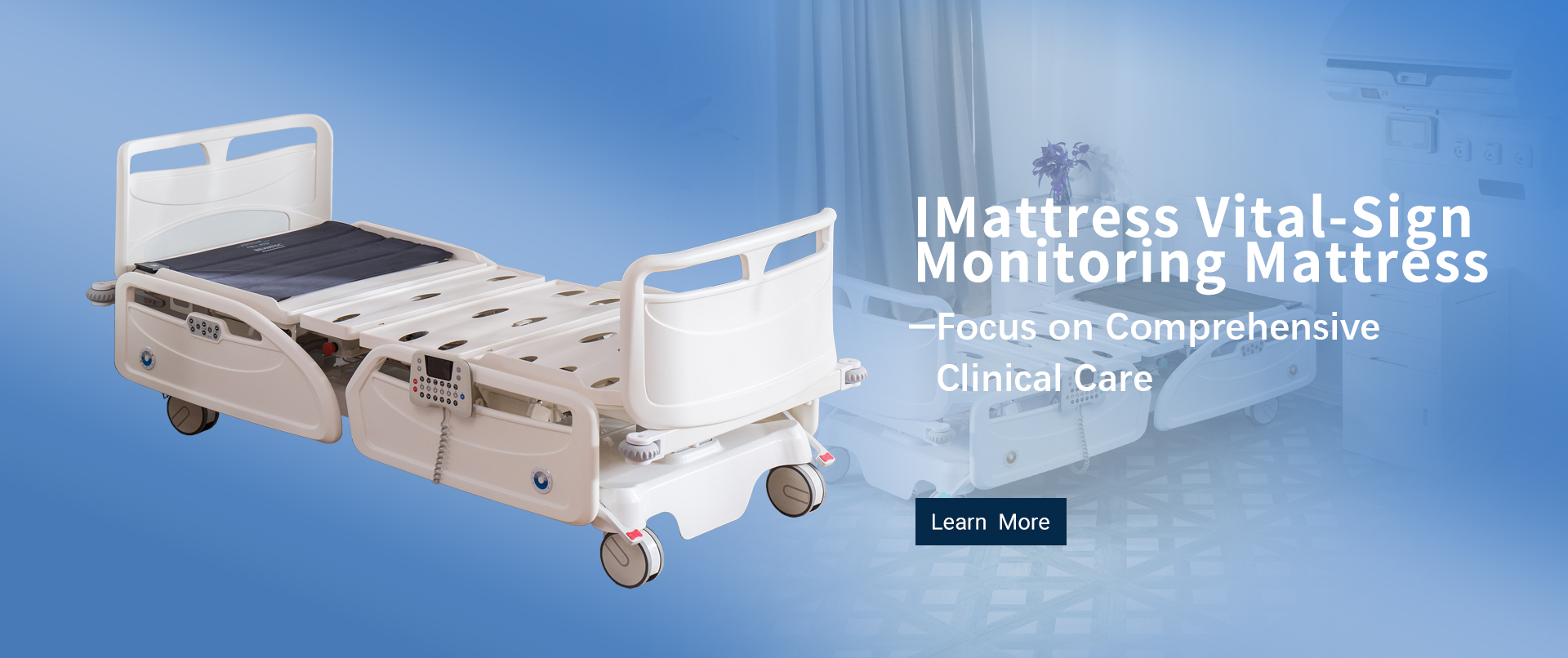
Future Innovations in Best Hospital Equipment Bed for 2025 and Beyond
Table of Contents
- Future Trends in Hospital Bed Design: Enhancing Patient Comfort and Safety
- Key Technological Advancements in Hospital Bed Equipment for 2025
- Comparative Analysis of Smart Hospital Beds: Features and Benefits
- The Role of Ergonomics in Future Hospital Bed Innovations
- Cost-Benefit Analysis of Advanced Hospital Beds: A 2025 Perspective
- Integrating Telehealth with Hospital Bedding Solutions: Trends and Challenges
- FAQS
- Related Posts
You know, healthcare is really changing all the time, and it's driving a growing need for high-tech hospital beds that make patient care a lot better and more comfortable. In fact, a recent report from Grand View Research says that the global hospital bed market is set to hit about USD 4.4 billion by 2025, with a big emphasis on smart and connected tech. As leaders in the industry push for digital transformation in healthcare, companies like Bewatec (Zhejiang) Medical Device Co., Ltd. are really leading the pack when it comes to innovation. They're all about making sure that patients have a comfy, safe, and personalized experience during their care. Honestly, Bewatec is on a mission to shake up the hospital equipment world by packing their beds with cutting-edge features. This approach not only meets what patients need but also positions them as a global partner in high-quality manufacturing, so hospitals everywhere can provide top-notch care in the years to come.

Future Trends in Hospital Bed Design: Enhancing Patient Comfort and Safety
You know, hospital beds have come a long way, and it’s really exciting to see how they're evolving to make patients feel more comfortable and safe. By 2025, we’re expected to see some pretty cool innovations! A recent report on the global hospital bed market suggests that the industry is likely to grow at around 4% each year from 2022 to 2027. This growth is pretty much driven by tech advancements and a shift toward more patient-centered care. Imagine beds that have smart tech like pressure sensors—they’ll keep an eye on how patients are moving and adjust automatically to keep them comfy and help prevent bedsores. Pretty neat, right?
And let’s not forget about safety—it's a big deal when it comes to designing hospital beds. Recent studies show that if beds are designed right, they can really cut down the number of falls among patients, which can happen in about 3% to 5% of admissions. With new features like anti-roll side rails and built-in fall detection systems, we’ll soon see these becoming standard in hospitals. By tapping into these innovations, not only can hospitals help patients have better outcomes, but they can also make things a lot smoother for caregivers. In the end, it’s all about creating a more efficient healthcare experience for everyone involved.
Key Technological Advancements in Hospital Bed Equipment for 2025
Looking ahead to 2025, we're about to see some pretty exciting changes in hospital bed technology, and it's all thanks to some cool innovations in medical equipment. One of the standout trends is the introduction of brain-computer interface (BCI) tech right into hospital beds. I mean, can you believe it? With these new BCI developments, patients might soon be able to communicate with medical staff way more easily—no need for verbal chats all the time! This could really improve the experience for patients, especially those who have trouble moving or talking.
And it doesn’t stop there. There’s a growing focus on making hospital equipment more personalized and high-tech. You know, the push to form specialized medical groups for geriatric care just shows how important it is to come up with solutions that cater to our aging population's unique needs. Think about it: smart beds that automatically adjust to what the patient needs! That’s going to make a world of difference when it comes to recovery and comfort. Plus, as the medical tech industry keeps evolving—especially with an eye on local manufacturing and sustainable innovations—we can expect some serious upgrades in the quality and efficiency of hospital beds in the next few years.
Comparative Analysis of Smart Hospital Beds: Features and Benefits
You know, the healthcare scene is really changing fast. One of the biggest game-changers on the horizon is the smart hospital bed—these things are going to revolutionize patient care by 2025 and beyond! They come packed with cool tech that really boosts comfort and safety for patients, which is super important for making healthcare work better overall. So, here’s a fun fact: experts say that the market for smart beds is set to skyrocket, jumping from about $2.6 billion in 2024 to around $3.8 billion by 2034. That’s a growth rate of 3.9% per year from 2025 to 2034! What's driving this surge is the growing demand for automation and AI systems that can help healthcare staff do their jobs even better.

When you dive into the details of what makes smart hospital beds special, you’ll find some pretty compelling features. For starters, they usually have automation that allows for easy patient monitoring and can be adjusted to fit each patient's unique needs. Plus, they’re even starting to use blockchain technology alongside the Internet of Medical Things (IoMT), which is super important for keeping patient info safe and secure. As healthcare providers lean into these innovations, the focus on smart bed tech isn’t just about making patients happier; it’s also about allowing healthcare facilities to run smoother in the long run.
The Role of Ergonomics in Future Hospital Bed Innovations
 So, as hospitals are changing and adapting, we’re really starting to see some exciting advancements in the design and functionality of hospital beds – and it’s all about making things more ergonomic. The shapes of future hospital beds are gonna focus on keeping patients comfy while also helping staff work more efficiently. Imagine beds that can easily adjust in height and position, making it simpler for healthcare providers to get patients into the right spot without risking their own backs. Plus, with user-friendly controls and smart technology, caregivers can handle everything a patient needs without wearing themselves out, which is great for keeping the whole hospital running smoothly.
So, as hospitals are changing and adapting, we’re really starting to see some exciting advancements in the design and functionality of hospital beds – and it’s all about making things more ergonomic. The shapes of future hospital beds are gonna focus on keeping patients comfy while also helping staff work more efficiently. Imagine beds that can easily adjust in height and position, making it simpler for healthcare providers to get patients into the right spot without risking their own backs. Plus, with user-friendly controls and smart technology, caregivers can handle everything a patient needs without wearing themselves out, which is great for keeping the whole hospital running smoothly.
And you know, ergonomics isn't just about how beds adjust; it also includes the materials that go into them. In the future, we’re probably going to see beds made with breathable, antimicrobial fabrics that not only keep patients comfy but also help with hygiene. On top of that, there'll likely be pressure-relieving surfaces to help prevent bedsores and promote better circulation for those who have to spend a lot of time lying down. As hospitals strive to deliver top-notch care, the focus on these ergonomic innovations will fundamentally shift how hospital beds are designed, ultimately leading to happier patients and healthier, less stressed staff.
Cost-Benefit Analysis of Advanced Hospital Beds: A 2025 Perspective
Looking ahead to 2025, it's pretty clear that the world of hospital equipment, especially hospital beds, is gearing up for some exciting upgrades. A recent report from Frost & Sullivan predicts that the global market for smart hospital beds is set to hit around $4.1 billion by 2025, which means a solid growth rate of 10.7% annually. So, what’s fueling this boom? Well, it’s mainly the growing need for better patient care and the rise of automation and tech in hospitals. These advanced hospital beds come with some pretty cool features like adjustable heights, built-in monitoring systems, and pressure-relief tech. Not only do they make patients feel more comfortable, but they also help cut down on issues like hospital-acquired conditions, which has a big impact on the quality of care overall.
When you think about the cost versus the benefits, investing in these high-tech beds really makes sense, especially when you look at patient outcomes and how efficiently hospitals operate. A study in the Journal of Healthcare Management found that using these advanced beds led to a 30% drop in falls and a 25% reduction in skin breakdown. That’s huge! These improvements not only save hospitals money, but they also boost patient satisfaction, which is super important for getting reimbursement in today's value-based healthcare world. Plus, there’s evidence that hospitals embracing these tech-savvy beds saw a 15% rise in staff efficiency, allowing healthcare workers to spend more time taking care of patients rather than being bogged down with manual tasks.
Future Innovations in Best Hospital Equipment Bed for 2025 and Beyond - Cost-Benefit Analysis of Advanced Hospital Beds: A 2025 Perspective
| Feature | Estimated Cost (USD) | Benefits | Expected Lifespan (Years) | ROI (Return on Investment) |
|---|---|---|---|---|
| Smart Monitoring System | $5,000 | Real-time patient monitoring, alerts for vital signs | 10 | 20% |
| Electric Height Adjustment | $3,500 | Ease of access for caregivers and patients | 12 | 15% |
| Integrated Bedside Controls | $4,200 | Convenient access to controls for patients | 8 | 18% |
| Pressure Relief Mattress | $2,500 | Reduces risk of pressure ulcers | 5 | 25% |
| Telehealth Integration | $6,000 | Allows remote consultations, reduces hospital stay length | 7 | 22% |
Integrating Telehealth with Hospital Bedding Solutions: Trends and Challenges
Looking ahead to 2025, it’s pretty clear that telehealth is really starting to make waves, especially when it comes to hospital beds. A recent report from MarketsandMarkets highlights that the global telehealth market could skyrocket to $459.8 billion by 2030! That’s a massive growth spurt, around 37.7% each year since 2021. The main drivers behind this trend? Well, it’s all about the rising need for remote patient monitoring and the sheer convenience of virtual check-ins. This shift is pushing for some seriously advanced hospital beds that come equipped with telehealth features.
We’re seeing some cool designs for hospital beds that have telehealth services built right in, allowing for real-time monitoring of patients. A study by Grand View Research states that the smart beds market is projected to grow to over $43 billion by 2028. And that’s largely due to IoT tech making its way into healthcare. These smart beds can gather vital signs and send that info straight to healthcare providers, which means they can respond to patients' needs more quickly. But, let’s be real—there are still some hurdles to jump over when it comes to making sure all these different healthcare technologies work well together. It’s super important for ensuring that the telehealth features in hospital beds actually do what they’re supposed to do efficiently and effectively.
Future Innovations in Best Hospital Equipment Bed for 2025 and Beyond
This chart illustrates the anticipated importance levels of future innovations in hospital equipment beds by 2025, highlighting key areas such as Telehealth integration and smart bed features.
FAQS
: The primary focus of future hospital bed design is on enhancing patient comfort and safety, with innovative features expected to emerge by 2025.
Hospital beds are expected to integrate smart technologies, such as pressure sensors, which monitor patient movements and adjust the bed's position to prevent bedsores.
Well-designed beds can significantly reduce the incidence of falls among hospitalized patients, which currently range between 3% to 5% of hospital admissions, through features like anti-roll side rails and integrated fall detection systems.
The integration of brain-computer interface (BCI) technologies into hospital beds may facilitate more efficient communication and real-time monitoring, improving the patient experience, especially for those with mobility or communication challenges.
The growth of the smart hospital beds market is driven by the increasing demand for automation and AI-enabled systems that enhance healthcare staff capabilities, with the market projected to grow from USD 2.6 billion in 2024 to USD 3.8 billion by 2034.
Smart hospital beds offer notable features such as automation for seamless patient monitoring and adjustable functionalities that cater to individual patient needs, enhancing both comfort and safety.
The integration of blockchain technology into the Internet of Medical Things (IoMT) addresses security and privacy concerns, ensuring that patient data remains protected while enhancing the overall functionality of smart beds.
There is a push for personalized hospital equipment to meet the unique demands of aging populations and improve recovery outcomes through tailored solutions like smart beds that automatically adjust based on patient needs.
Advancements in hospital bed design are expected to enhance patient outcomes, streamline caregiving processes, and ultimately lead to a more efficient healthcare system.
Related Posts
-

Unlocking Comfort: Benefits of the Best Patient Bed for Enhanced Recovery
-

Future Innovations in IoT Sleep Health Solutions for 2025 and Beyond
-

12 Best Manufacturers for Hospital Beds in China You Should Know
-

Ultimate Guide to Finding the Best Hospital Equipment Online for Global Buyers
-

Your Ultimate Guide to Best Wifi and 4/5g Connected Health Monitoring Solutions








